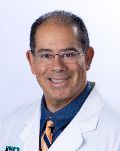Florida Anti Snore Ring - In Your Local Area
Nibaldo Morales DMD
Appointments: (305) 448-9996

Nibaldo Morales D.M.D.
Nibaldo Morales DMD
277 Minorca Avenue
Coral Gables, FL 33134




For a quality porcelain crown in the Coral Gables, FL area, Dr. Nibaldo Morales is known for natural-looking results. At Nibaldo Morales DMD, we use quality materials to restore your smile.
Your new tooth colored crown will blend in with the rest of your teeth. Our state-of-the-art techniques will make your smile look healthy and natural again.
At Nibaldo Morales DMD we offer a range of treatment options for sleep apnea. If snoring or obstructed breathing is a problem, call Dr. Morales today to learn how we can help you breathe easier.
Left untreated, sleep apnea can cause serious health problems, so contact us now to schedule an examination.
If you're looking for attractive porcelain veneers, Coral Gables area veneers dentist Dr. Morales can help. Our friendly team will evaluate your situation to make sure you're a good candidate for dental veneers.
Then we'll develop your individual plan for the process. Your cracked, chipped or discolored teeth will be transformed to look completely natural so you can enjoy your bright new smile.
Here at Nibaldo Morales DMD, your comfort is our number one priority. We will do our utmost to put you at ease and keep you feeling relaxed and secure. Under the experienced leadership of Dr. Nibaldo Morales, our dedicated team of professionals is at your service to explain your treatment thoroughly and answer any questions you may have.



More Sleep Apnea Dentists in the Coral Gables, FL Area Near You
Dr. J. Edward Carroll, DMD
2156 Harden Blvd.
Lakeland, FL, 33803
NN Dentistry
5973 W. Hillsboro Blvd.
Parkland, FL, 33067
(954) 340-4044
Doctor - Activate Your Free 1stSleepApnea Directory Listing
Dr. Craig Spodak, DMD,
4665 W Atlantic Ave
Delray Beach, FL, 33445
(561) 498-0050
Carlos M. Coro, D.D.S.
3299 Ponce De Leon Blvd.
Coral Gables, FL, 33134
(305) 444-5066


